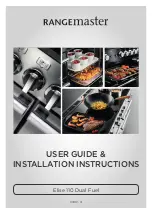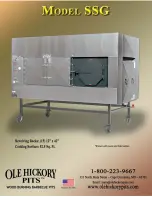
10
INTRODUCTION TO COOKING IN A SLOW COOKER
Due to the
unique “wrap-around side” heating element, low cooking temperatures and long cooking
times, slow cooking cannot be compared to oven or frying pan cooking. Slow cooking is cooking at a
very low temperature, just below boiling point. Since liquids do not boil there is little, if any steam and
no evaporation, foods do not stick and virtually no stirring is required. Slow cooking also allows you to
select cheaper cuts of meat, which still retain both their flavour and nutrition.
On Low, the Slow Cooker can operate all day and night if required.
When set to High, it is very much like a covered pot on the stove. Foods will cook in half the
time required for Low.
When set to Auto, the Slow Cooker will cook on High until the food reaches a pre-set
temperature, then switches to Low
and maintains a constant slow cooking temperature. “Auto”
is the ideal setting for someone leaving the house for the whole day as most food will cook for 8
– 9 hours and be ready to serve when they return.
Preparing in Advance
Prepare a recipe in advance the night before in the removable ceramic bowl and store it, covered in the
refrigerator. When you are ready to cook, transfer the ceramic bowl to the Slow Cooker.
Important:
The cooking vessel within the Slow Cooker is ceramic, and as with any fine ceramic, it will
not withstand the shock of sudden temperature changes.
Do not
place any frozen or very cold foods,
or store in the refrigerator if the ceramic bowl has been pre-heated or hot to the touch. The ceramic
bowl is not suitable for storing foods in the freezer.
Cutting Vegetables
An unusual characteristic of slow cooking is that most vegetables
– depending on their age – generally
cook slower than most meats. Most vegetables should be cut into small pieces, or at least quartered
and placed near the sides, or close to the bottom of the Slow Cooker. Carrots should be peeled and
placed where they will be completely covered with liquid.











































